IPhone 16e Or Pixel 9a? Pros And Cons Head-To-Head
Both Apple and Google announced their budget smartphones in the last couple of months. Apple’s handset arrived on March 19, while Google presented its own offering exactly a month before that. Google’s Pixel 9a handset did go on sale very recently, however, while the iPhone 16e has been available for a while now. The difference in their price tags is $100, and they’re actually quite different smartphones. Some of you are probably trying to decide which one to get, despite the fact they have completely different operating systems. Well, if that’s the case, we may be able to help. We’re here to take a look at both the pros and cons of the iPhone 16e and Pixel 9a, in order to try to help you decide.
I recently wrote editorials on both of these smartphones. Both of those have, more or less, focused on what each company sacrificed in order to bring these two devices to life. We went over some of the biggest drawbacks of each smartphone. Well, in this article, we’ll go over various aspects of each phone and see which one has the advantage in which category. That will, hopefully, help you make a purchasing decision. Let’s get to it.
Design
In all honesty, neither of these two smartphones will win beauty contests, but their designs may appeal to some of you. They are different, though, very much so. The iPhone 16e is a noticeably smaller device, while it’s also thinner and lighter. That is to be expected as it has a 6.1-inch display compared to a 6.3-inch one on the Pixel 9a. The iPhone 16e does have considerably thinner bezels in comparison, even though both of them have uniform bezels. Apple’s phone includes a notch at the top, however, which takes away from the immersion of use.
![]()
Both of them have a flat frame, while their front and back sides are also flat. The Pixel 9a’s two cameras on the back don’t even protrude, only the rim around them. The iPhone 16e has only one camera, but it does protrude a bit. The Pixel 9a has a plastic back, while the iPhone 16e includes a glass back. Both phones are quite slippery in the hand, while the iPhone 16e is easier to use with one hand, mostly due to its size.
Display
The Apple iPhone 16e includes a 6.1-inch OLED display with a resolution of 2532 x 1170. The Pixel 9a, on the other hand, has a 6.3-inch pOLED display with a resolution of 2424 x 1080. Both displays are vivid and have good viewing angles. They’re also more than sharp enough. The bezels around the Pixel 9a’s panel are bigger, but the iPhone 16e has that distracting notch at the top.
The Pixel 9a’s display has one advantage over the iPhone 16e’s panel, while the iPhone 16e’s panel has one advantage too. The Pixel 9a’s panel does get brighter outdoors, noticeably so. This will mean a lot to you if you’re planning to using the device a lot outdoors, especailly under direct sunlight. It also comes with a 120Hz refresh rate while the iPhone 16e’s panel is limited to 60Hz. Do note that you’ll need to enable the Pixel 9a’s refresh rate, as it’s set to 60Hz out of the box. The iPhone 16e does come with better display protection, however. It includes the Ceramic Shield glass compared to the Gorilla Glass 3 on the Pixel 9a. The Gorilla Glass 3 is prone to microscratches, as we’ve learned in the past.
Performance
The iPhone 16e is fueled by a nerfed variant of the Apple A18 chip. It’s a 3nm chip, but its GPU has been nerfed compared to the chip inside the iPhone 16. The Pixel 9a, on the other hand, is fueled by the Google Tensor G4, a 4nm chip. Both smartphones come with 8GB of RAM and non-expandable storage.
When it comes to performance, both of them deliver in regular, daily tasks. They’re both quite smooth, though we have to say that the Pixel 9a’s refresh rate advantage does show. Still, both are very snappy, and lag is not really a part of the picture. The iPhone 16e does have a more powerful chip, though, undoubtedly, and it will do a better job with gaming, despite the it has less cores than a full-fledged Apple A18 chip. If you’re not planning on playing demanding games, however, either phone will serve you perfectly fine from a performance standpoint.
Cameras
Neither one of these phones has groundbreaking camera performance, not even close. Both do a good job, but there are some things that you should know. The iPhone 16e includes a single camera on the back, a 48-megapixel unit (1/2.55-inch sensor size). The Pixel 9a, on the flip side, has two rear cameras. A 48-megapixel main camera (1/2.0-inch sensor size) is backed by a 13-megapixel ultrawide camera (1/3.1-inch sensor size, 120-degree FoV).
The two phones provide noticeably different images. The Pixel 9a does lean more towards contrasty shots, while the colors are a bit more pronounced too. They do a good job, but manage your expectations. The Pixel 9a can do a bit better job in low light, which is not surprising considering it has a more capable main sensor. The lack of a second camera on the iPhone 16e is a bit disappointing, that’s for sure, as the Pixel 9a is a more versatile camera phone.
![]()
When it comes to zoomed-in shots, they’re not the best. Digital crop is usable up to a certain point, but… it has limits, and the images will lose detail fast. When it comes to selfie shooters, neither is great, but the Pixel 9a does offer a wider field of view. Some camera features are missing from both phones, compared to their more expensive siblings, but that is to be expected considering the price tags.
Audio
Both smartphones have stereo speakers. Neither of them includes an audio jack, but both support audio via the Type-C port, if you have a dongle. Also, Bluetooth 5.3 is a part of both smartphones. In regards to how their speakers sound, the iPhone 16e does win. It offers fuller sound, the Pixel 9a’s output sounds a bit more compressed, in a way. Still, if you’re not that picky or don’t use a loudspeaker to listen to music often, you’ll be good. The iPhone 16e also sounds better when you’re using that loudspeaker for calling, and it seems to have better audio for voice calls too, not much better, but still.
Software & AI
We could write all day about the software aspects of the two phones. The point is, they’re completely different. The iPhone 16e runs iOS, while the Pixel 9a runs Android. You need to know what suits you better in the general scheme of things and go for it. Though Android does seem to be in a better place now. It’s getting more and more stable while it’s packed with features. Apple’s did “borrow” a bunch of features from Android for iOS 18, while some bugs have managed to creep in two. Android offers way more customization, while iOS will serve you better if you’re in Apple’s ecosystem. Each of them has its advantages, and they’re polar opposites, basically. The Pixel 9a will get 7 years of updates, while the iPhone 16e will get at least 5 years’ worth of updates.
When it comes to AI, however, it’s not comparable, the Pixel 9a wins, easily. Google is miles ahead in terms of AI compared to Apple. Apple didn’t really deliver on some of its AI promises, at least not yet. Not only do you get all the major Gemini features on the Pixel 9a, but you do get all the image editing AI features that Google offers, on top of everything else. It remains to be seen what will Apple do in terms of AI moving forward, as the equation may change. However, as things stand now, Google is the clear winner in that category.
Battery life & charging
Both of these phones offer good battery life. The Pixel 9a is larger and it does come with a bigger battery, not to mention that Android phones usually do. Both phones will easily last through a full day of use for most people, only power users may need to reach for a charger at some point. Still, the battery life is not bad at all. It’s actually quite comparable, even if you’re using a 120Hz refresh rate on the Pixel 9a, which is what we did. Your mileage may vary, though, of course, battery life could differ wildly from one user to the next. Don’t expect either phone to be a battery monster, and you’ll be fine. They’re both good, but nowhere near the best.
When charging is concerned, they’re both quite slow. The iPhone 16e takes around an hour and 50 minutes to fully charge. The Pixel 9a will take slightly over an hour and a half to fully charge. When you switch to wireless charging, things get a lot slower, as both of them support 7.5W wireless charging. Needless to say, that is painfully slow. The iPhone 16e also doesn’t support MagSafe, unlike its siblings.
Conclusion
As you can see, there are a lot of differences between the two devices. Each of them has its advantages, but both companies had to cut corners in a lot of places to reach the required price tags. The Pixel 9a does have the advantage of having a $100 lower price tag too. We cannot definitely say that one is better than the other, of course, but weigh their pros and cons and see which one suits you better, while also considering their software/ecosystems, of course.
What’s your reaction?
Love0
Sad0
Happy0
Sleepy0
Angry0
Dead0
Wink0
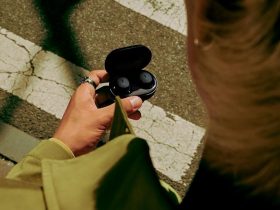
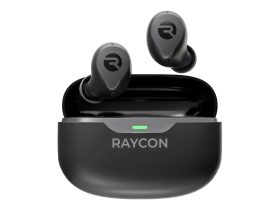
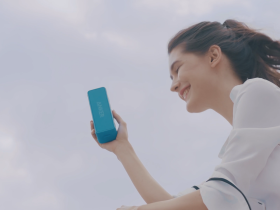

![everything-new-in-android-16-qpr1-beta-1-[gallery]](https://betadroid.in/wp-content/uploads/2025/05/22273-everything-new-in-android-16-qpr1-beta-1-gallery-280x210.jpg)

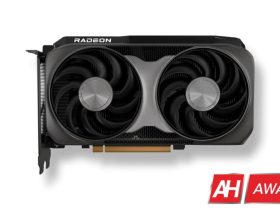

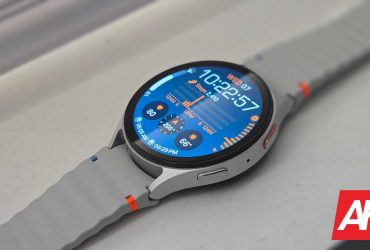

Leave a Reply
View Comments